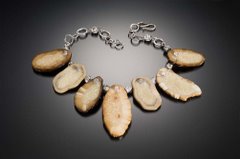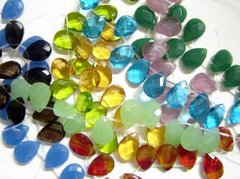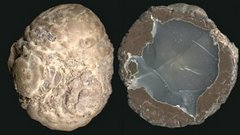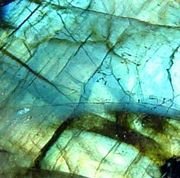What Is Fossil Ivory?
Woolly Mammoths were great creatures that wandered our earth freely over 10,000 years ago. Like their relatives, modern day elephants, they had ivory tusks. You may have seen drawings of the great Woolly Mammoth whose tusks could weigh up to 300 pounds each and measure over 16 feet in length. Drastic climate changes during the great ice ages caused these animals to succumb to natural forces. Their skeletons and tusks were then naturally buried for over thousands of years in the frozen Artic tundra of Alaska, Canada and Siberia.
Fossil Ivory Tusks
The gigantic tusks, which have been hidden for thousands of years in the remote Arctic tundra of Alaska, Canada and Siberia, are unearthed many ways. Bush pilots sometimes spot the tusks along riverbanks in the Alaska tundra. Other times the tusks are unearthed as a natural result of gold mining or road construction activities. The beautiful fossil ivory hues of tan, brown and blue are the result of thousands of years of mineralization. The colors vary from tan to dark brown depending on the mineral deposits that were in the immediate soil surrounding the fallen mammoth. Each tusk exhibits unique character and beauty that is never exactly the same in other pieces of fossil tusk ivory.
Jewelry Artists and Fine Crafts Designers
Jewelry artists, and fine craft designers are honored to utilize these prized ancient ivory fossils in their lustrous jewelry, small sculptures or inlays in collectible knives that reflect the hues of the Artic landscape. Artists painstakingly design, carve, join, polish and finish each piece to enhance the unique color of the Artic Ivory. To the delight of fine jewelry collectors, fossil mammoth ivory has emerged as an eco-friendly and increasingly valuable alternative to elephant ivory. As with all fine gem quality ivory, the luster is enhanced with frequent exposure to one’s natural skin oils, developing a rich patina over time.
Elephant Ivory or Fossil Ivory
Although there are many similarities between fossil mammoth ivory and elephant ivory, there are identification methods that can distinguish the two. A feature used to identify mammoth ivory is a brownish or blue-green colored ‘blemish’ called vivianite, an iron phosphate. While barely visible to the naked eye, it has a dramatic purple appearance if seen under an ultraviolet light source. Even if discolored, elephant ivory does not have this characteristic fluorescence of vivianite. Polished cross-sections of elephant and mammoth ivory dentine both display exquisite fine lines, cross-hatching or chevron marks called Schreger lines. However, the Schreger line angles, as measured by specialists, show distinctly different angles for elephant and mammoth ivory ~ another distinguishing characteristic.
International trade in elephant ivory has been largely shut down due to concern for the preservation of a living species. While still scarce and difficult to work with, this lustrous natural ivory possesses the same gem qualities of new ivory, without the stigma attached to illegal harvesting of endangered elephants.
These hidden fossil treasures are beautiful gem alternatives to new elephant ivory. Visit Urban Organic Designs website to see fossil Mammoth Ivory necklaces.





No comments:
Post a Comment